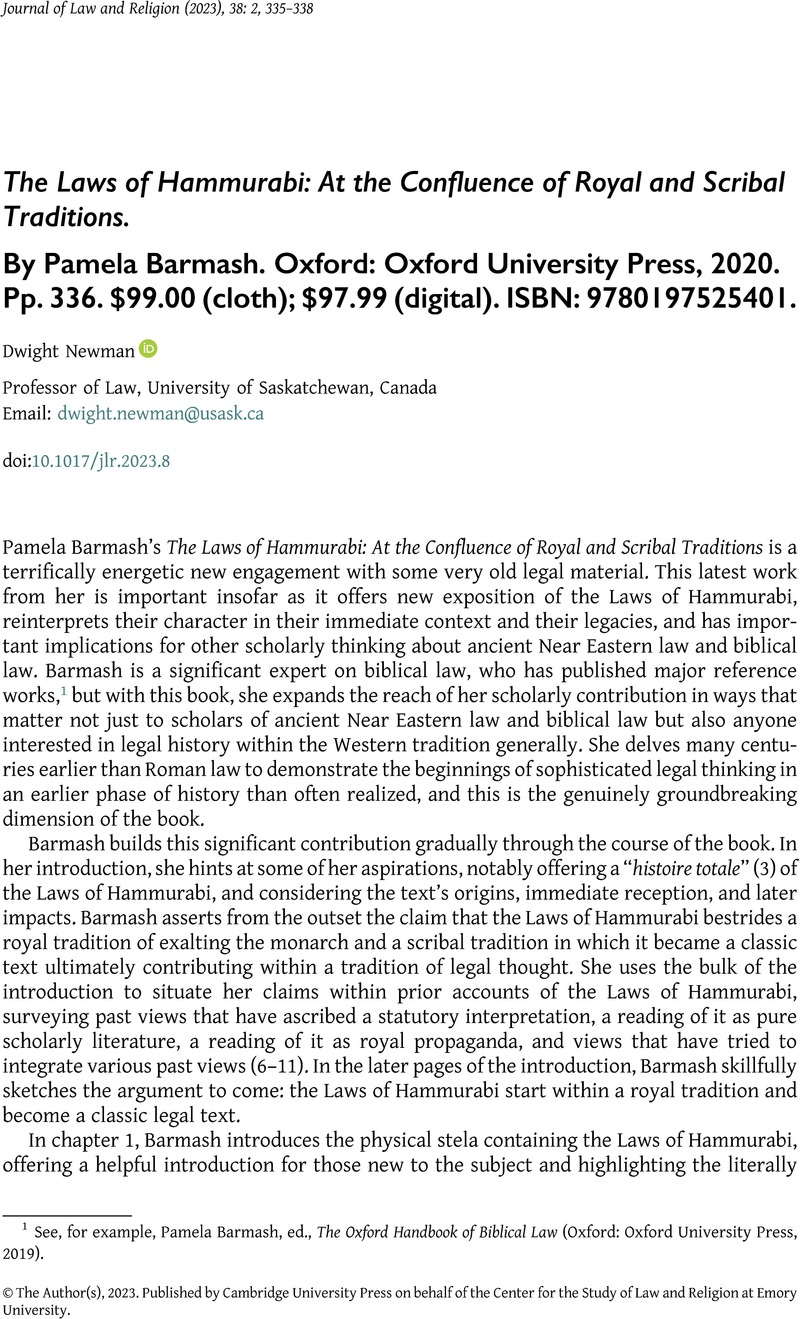No CrossRef data available.
Published online by Cambridge University Press: 15 May 2023

1 See, for example, Barmash, Pamela, ed., The Oxford Handbook of Biblical Law (Oxford: Oxford University Press, 2019)CrossRefGoogle Scholar.
2 See, for example, Roth, Martha T., Law Collections from Mesopotamia and Asia Minor, 2nd ed. (Atlanta: Society of Biblical Literature, 1997)Google Scholar.
3 See, for example, Morrow, William S., An Introduction to Biblical Law (Grand Rapids: Eerdmans, 2017)Google Scholar.
4 While I do not wish to oversimplify or overstate their conclusions, a sort of culmination of this direction is found in Walton, John H. and Walton, J. Harvey, The Lost World of the Torah: Law as Covenant and Wisdom in Ancient Context (Grand Rapids: IVP Academic, 2019)Google Scholar. Compare also, LeFebvre, Michael, Collections, Codes, and Torah: The Re-characterization of Israel’s Written Law (New York: T&T Clark, 2006)Google Scholar; Jonathan Vroom, “Law, Authority, and Interpretation in the Ancient World: The Origin of Legal Obligation in Early Judaism” (PhD diss., University of Toronto, 2017).
5 Fish, Morris J., “An Eye for an Eye: Proportionality as a Moral Principle of Punishment,” Oxford Journal of Legal Studies 28, no. 1 (2008): 57–71 CrossRefGoogle Scholar.